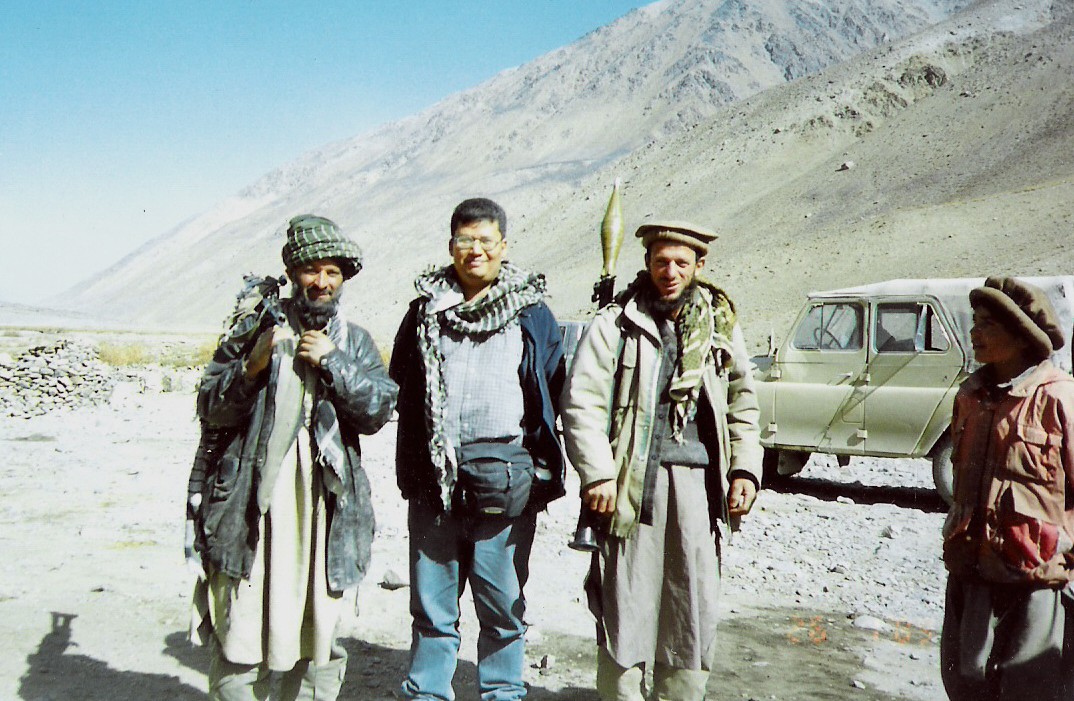Don Pathan
The Nation
Three years ago today when well over 100 Malay-Muslim militants launched a coordinated attack against 11 police outposts and one station in the deep South, the entire country was jolted by the unprecedented nature of the attacks.
Few knew what to make of it - young men armed with little more than machetes charging into certain death just to be heard.
Most died at the scene of the attacks, while some were shot point blank at close range. But the ones who caught everybody's attention were the 32 militants who retreated to the historic Krue Se Mosque on the outskirts of Pattani after attacking a police outpost nearby. Through the mosque's loudspeaker, the militants urged local Malays to rise up and take back their land from the invading Siamese.
By mid-afternoon, General Pallop Pinmanee, the highest-ranking official on the scene - who just happened to be in the neighbourhood on that day - decided he had had enough and ordered a full-scale bombardment of the mosque.
He admitted later that he was concerned that local residents would rise up and side with the militants. To him, stability overdid local sensitivity and the sanctity of the mosque.
Not only did the incident shed light into the lack of professionalism in the Thai armed forces - Pallop had no business directing the attack because he was not part of the local command - it left a permanent scar on the psyche of the Thai nation.
For many local Malays these young men were fighters who gave their lives just to be heard. For the security apparatus, the attacks were a sign that the worse was yet to come and that no one could be complacent. If a whole bunch of young men were willing to charge into certain death, the possibilities were endless.
What inspired the knife-wielding militants to do what they did is still uncertain, but it was obvious that many of the insurgents saw themselves as martyrs - and so do the locals. Most if not all of the April 28 militants were buried as martyrs in line with Islamic tradition.
The unprecedented nature of the April 28 militants' attack has yet to be repeated and probably never will.
But the psychological impact continues to be felt in military circles in the restive region where daily attacks against government troops continue unabated.
Moreover, today's attacks show that the militants are employing a higher degree of precision - as seen in an attack last week when an a group of about 50 militants ambushed a convoy of military vehicles, wounding 18 soldiers who were lured to a school fire set by insurgents.
Indeed, the April 28, 2004 bloodbath also set off a storm of debate among those in religious circles who wondered if the act could be considered a suicide mission. If so, would Thailand face the kind of suicide attacks that have become commonplace in the Middle East or in the Sri Lankan civil war?
There has been no conclusive answer to the question of whether the strikes constituted a suicide mission. The government's initial response was that the militants were a bunch of drug-crazed teenagers. Bangkok didn't want to see the political and security significance of the incident.
Local Islamic leaders comforted themselves with a "technicality". They pointed to the fact that these young men carried machetes. The mission was suicidal; it was not a suicide mission.
Besides, all the targets were police outposts and one station, not high-profile places packed with innocent civilians. In other words, the insurgents weren't after a high body count.
There was a general agreement that the group had employed unorthodox, supernatural beliefs and practices of folk Islam to indoctrinate these young men. Summoning spirits, making holy water and other popular customs carried over from Hinduism continue to be an important part of the local Muslims' belief system.
In an interview with The Nation after he was taken down in a gunfight later that year, Abdulah Akoh, an Islamic studies teacher who was initially part of the April 28 clique but decided not to take part, talked about a charismatic and persuasive Ismail Yaralong and how he used his charm to persuade others to join his outfit.
For more than four years, Ismail, also known as Ustaz Soh, moved from village to village, singling out young men of good standing in the communities and, after planting the seeds of trust, recruiting them into an outfit that Abdullah called Talekat Hikmahtullah Abandan (Direction from God Towards Invincibility).
Ustaz Soh promised invincibility and supernatural powers if and when a person reached a certain state of reverence. Properly trained, he said, a person could even make himself disappear or become impervious to bullets and knives.
An organisational manual, the Birjihad di Patani, found on the bodies of some of the April 28 insurgents provides a glimpse into the mind of the militants in Soh's outfit.
Besides justifying the killing of fellow Muslims who have betrayed the cause, the book also states that the next ruler of a liberated Patani should be from the bloodline of the deposed Patani sultanates, and that he should be a Shafi'i, one of the four schools of jurisprudence in Sunni Islam.
While these points suggest that the grievances of the April 28 outfit remained local, what concerns many is the possibility that this local struggle might become part of a global jihad where the banner would no longer be Malay nationalism but a fight for Islam.
Given the way the situation is being perceived as a Buddhist versus Muslim conflict, the latter phenomenon could very well reach Patani's shores sooner than later.
